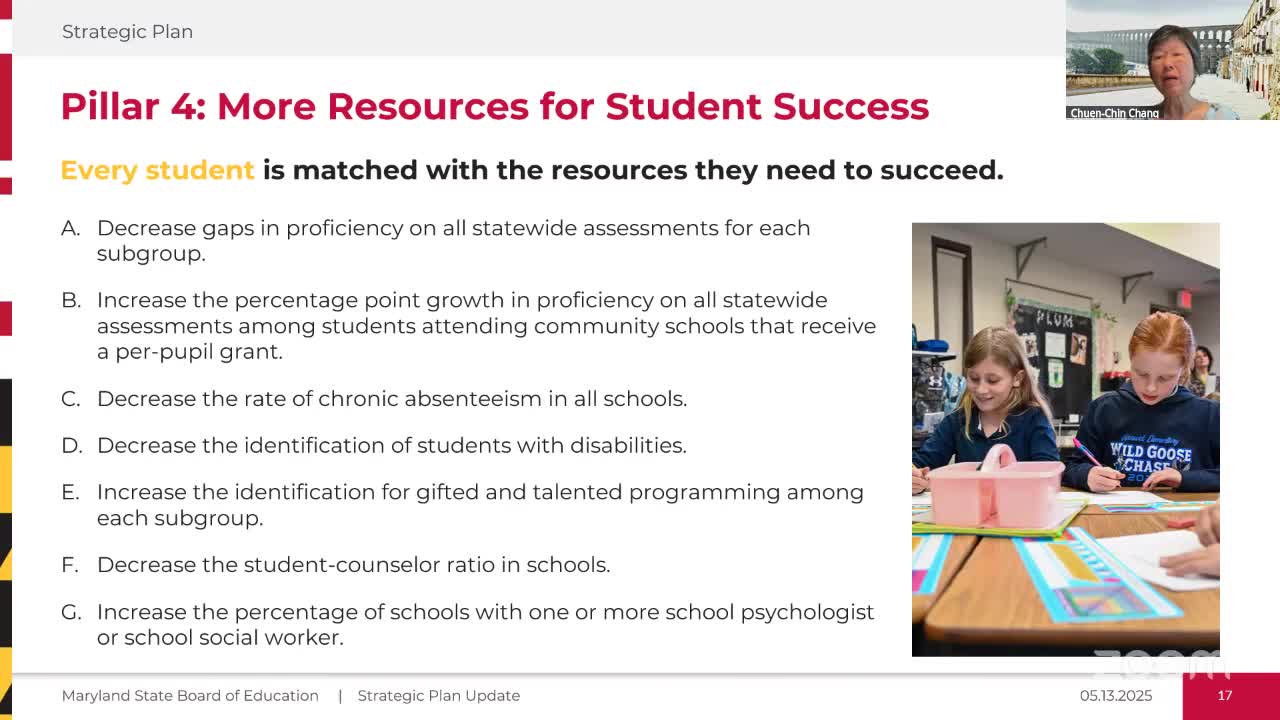Prince George's County Board discusses chronic absenteeism and benefits access for students
May 17, 2025 | Maryland Department of Education, School Boards, Maryland
This article was created by AI summarizing key points discussed. AI makes mistakes, so for full details and context, please refer to the video of the full meeting. Please report any errors so we can fix them. Report an error »

In a recent meeting held by the Maryland Department of Education, discussions centered around the critical intersection of student health and academic attendance, particularly focusing on the role of community schools in addressing chronic absenteeism. As the clock ticked towards the end of the session, the urgency of the topics at hand became palpable, with committee members emphasizing the need for a robust support system for students reliant on programs like CHIP and Medicaid.
One poignant moment arose when a committee member highlighted the importance of ensuring that families are aware of the benefits they qualify for, noting that many do not utilize available resources due to a lack of information. “Families don’t always view social services offices as accessible,” they remarked, suggesting that schools could serve as vital hubs for connecting families with necessary services. This approach aims to bridge the gap between educational institutions and social services, ensuring that students arrive at school ready to learn, both physically and mentally.
The conversation also touched on the pressing issue of benefit cuts, which could exacerbate the challenges faced by families. The need for leadership and stability in resource allocation was underscored, as committee members recognized that without adequate support, the goal of reducing chronic absenteeism would remain elusive.
In addition to addressing immediate needs, the committee stressed the importance of data transparency and accountability. Members called for a clear focus on outcomes, urging the state to model this behavior and communicate effectively with parents about how resources are being utilized. “What are we trying to accomplish with this dollar being spent?” one member asked, emphasizing the necessity of tracking and sharing data to foster trust and engagement within the community.
As the meeting concluded, the commitment to transforming education through collaboration and transparency resonated strongly. The discussions not only highlighted the challenges faced by students and families but also illuminated a path forward—one where schools become integral to the support network that empowers students to thrive. The implications of these conversations extend beyond the meeting room, promising a future where education and health services work hand in hand to nurture the next generation.
One poignant moment arose when a committee member highlighted the importance of ensuring that families are aware of the benefits they qualify for, noting that many do not utilize available resources due to a lack of information. “Families don’t always view social services offices as accessible,” they remarked, suggesting that schools could serve as vital hubs for connecting families with necessary services. This approach aims to bridge the gap between educational institutions and social services, ensuring that students arrive at school ready to learn, both physically and mentally.
The conversation also touched on the pressing issue of benefit cuts, which could exacerbate the challenges faced by families. The need for leadership and stability in resource allocation was underscored, as committee members recognized that without adequate support, the goal of reducing chronic absenteeism would remain elusive.
In addition to addressing immediate needs, the committee stressed the importance of data transparency and accountability. Members called for a clear focus on outcomes, urging the state to model this behavior and communicate effectively with parents about how resources are being utilized. “What are we trying to accomplish with this dollar being spent?” one member asked, emphasizing the necessity of tracking and sharing data to foster trust and engagement within the community.
As the meeting concluded, the commitment to transforming education through collaboration and transparency resonated strongly. The discussions not only highlighted the challenges faced by students and families but also illuminated a path forward—one where schools become integral to the support network that empowers students to thrive. The implications of these conversations extend beyond the meeting room, promising a future where education and health services work hand in hand to nurture the next generation.
View full meeting
This article is based on a recent meeting—watch the full video and explore the complete transcript for deeper insights into the discussion.
View full meeting
